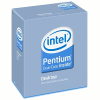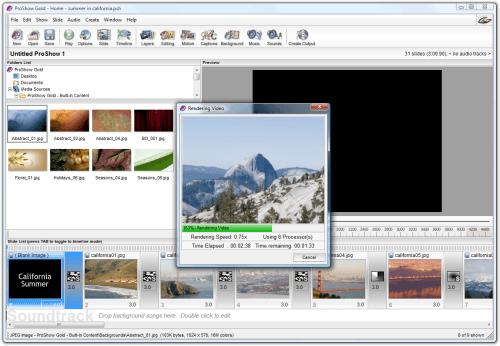- Qualcomm Launches Snapdragon 4 Gen 2 Mobile Platform
- AMD Launches Ryzen PRO 7000 Series Mobile & Desktop Platform
- Intel Launches Sleek Single-Slot Arc Pro A60 Workstation Graphics Card
- NVIDIA Announces Latest Ada Lovelace Additions: GeForce RTX 4060 Ti & RTX 4060
- Maxon Redshift With AMD Radeon GPU Rendering Support Now Available
Intel Pentium Dual-Core E5200

Need to upgrade or build a brand-new PC, but are on a very limited budget? If you don’t mind making some small sacrifices, Intel’s Wolfdale-based Pentium Dual-Core E5200 is worthy of serious consideration. Despite retailing for only $80, it offers solid performance and some incredible overclocking headroom.
Page 6 – Multi-Media: ProShow Gold, Sandra Multi-Media
While TMPGEnc XPress’ purpose is to convert video formats, ProShow from Photodex helps turn your collection of photos into a fantastic looking slide show. I can’t call myself a slide show buff, but this tool is unquestionably definitive. It offers many editing abilities and the ability to export in a variety of formats, including a standard video file, DVD video and even HD video.
Like TMPGEnc and many other video encoders, ProShow can take full advantage of a multi-core processor. It doesn’t support SSE4 however, but hopefully will in the future as it would improve encoding times considerably. Still, when a slide show application handles a multi-core processor effectively, it has to make you wonder why there is such a delay in seeing a wider-range of such applications on the marketplace.

While SSE4 was the reason for the E5200 being held back in our TMPGEnc Xpress test, I don’t think that’s the reason here. Although the DVD Video encode test scaled according to what we’d imagine it would, the HD video (1080p) causes massive variences between the E5200 and E7200. If it isn’t SSE4 being used (I couldn’t find reference to it), then it could very-well be the lack of L2 Cache. I’m having a difficult time settling on that, though.
Sandra 2009 Multi-Media
To help show a more “raw” version of the kind of potential Nehalem offers, we ran the Multi-Media test built into Sandra. This test here stresses the CPU’s ability to handle multi-media instructions and data, using both MMX and SSE2/3/4 as the instruction sets of choice. The results are divided by integer, floating point and double precision, three specific numbering formats used commonly in multi-media work.

SANDRA is the best tool available for seeing raw scaling ability, and this graph proves why. Compared to the E7200, the E5200 performs quite well. It’s held back in the SSE4-based Int 16x test, but that’s to be expected.
Support our efforts! With ad revenue at an all-time low for written websites, we're relying more than ever on reader support to help us continue putting so much effort into this type of content. You can support us by becoming a Patron, or by using our Amazon shopping affiliate links listed through our articles. Thanks for your support!






